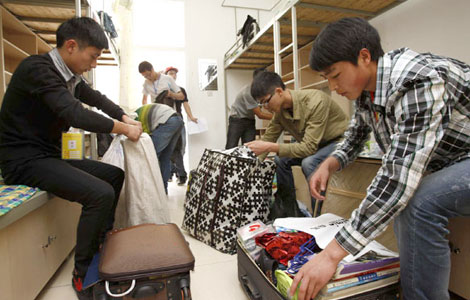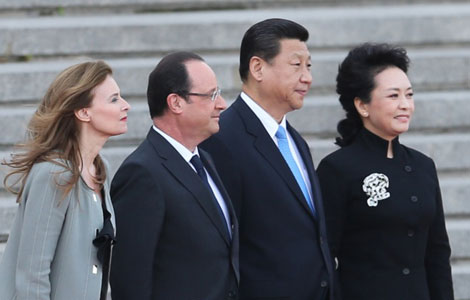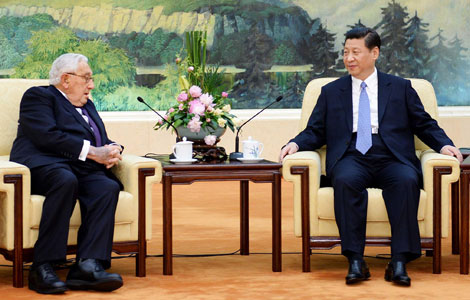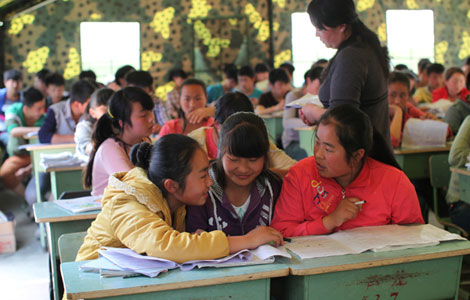Talent scouts must find, and also keep
Updated: 2013-04-26 09:04
By Chen Yingqun and Hu Haiyan (China Daily)
|
||||||||
In 2011, it launched the Recruitment Program of Foreign Experts, and plans to invite 500 to 1,000 high-end non-Chinese foreign professionals from other countries over the next decade.
Provinces, municipalities and autonomous regions have also started their own plans to introduce overseas professionals, such as Shenzhen's Peacock Program.
Overseas professionals recruited by the programs will be entitled to financial subsidies and favorable visa, taxation and wage, residence, medical care and insurance policies. For example, the Recruitment Program of Global Experts awards each foreign professional a subsidy of up to 1 million yuan from the central government, while scientific researchers can get a 3 million to 5 million yuan research allowance.
Moreover, governments have also offered favorable policies to encourage overseas Chinese to start businesses in China, which has also sparked a surge in overseas Chinese coming back.
|
||||
The nation's 1,000 Talents Plan has attracted more than 3,300 experts, even as tens of thousands of highly skilled people have been drawn to the country in other ways. China has also set up 112 international talent recruitment bases and more than 260 business start-up centers for Chinese returning from overseas, the latter drawing 40,000 people, Xinhua News Agency reported recently.
Technology drive
Introducing international talent, especial high-level talent, has long-been recognized as an ideal way for Chinese companies to absorb advanced technologies, especially in the technology-based sectors.
The automobile industry, for instance, has been developing rapidly in recent years, but has been grappling with a severe high-end talent shortage. Several Chinese automakers, such as Chongqing-based Changan Automobile group, have been tapping the international markets to mitigate this problem.
When the financial crisis broke out in the US in 2008, many of its talented auto professionals were rendered jobless in Detroit. Pang Jian, vice-director of Changan Automobile Engineering Research Institute, was one of those Changan Group recruited from Detroit.
After working for Ford for more than 10 years at its US research and development center, focusing on the noise, vibration and harshness (NVH) sector, the chance to work in China offered a new life and more growth opportunities for the experienced engineer.
"The Western automobile industry is well developed and mature, yet the fast developing Chinese automobile industry, which is relatively less developed, attracted me very much," he says. "I wanted to change my life path and immerse with the development."
For Pang, 50, the group has been living up to the kind of promise it held for him when he first moved there.
"It was enthusiasm that brought me to China to work for the Changan Group," says Pang. "The phrase 'strong growth' sums up my experience and observation of the Chinese automobile industry since then."
As an expert in the NVH sector, Pang belongs to the 1,000 Talents Plan list. Changan has 12 experts whose names are on the list. These experts have brought in the much-needed advanced expertise to the group. For instance, under Pang's instruction and guidance, Changan's R&D strength in NVH has improved since 2008.
For some companies, what matters more are creative thinking and frontier concepts brought in by the overseas talent.
Mi Junren, deputy chief architect of the Beijing Institute of Architectural Design, a state-owned institute that has designed many of China's symbolic buildings, such as the Great Hall of the People and the National Center for Performing Arts, agrees with this point.
Most Viewed
Editor's Picks

|

|

|

|

|

|


















